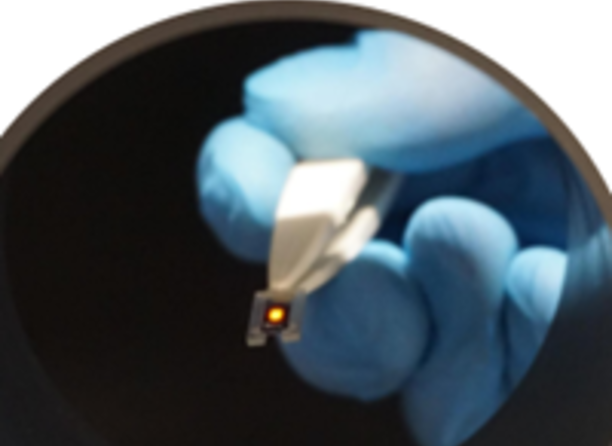Neurostimulation with light - Wireless magnetoelectric organic light-emitting diode
Ref.-No. 6465
Keywords: neuro-stimulation, optical simulation, wireless magneto-electric organic light emitting diode (OLED), implant Simulation
Neurostimulation is nerve stimulation with electrical pulses. A new wireless magnetoelectric organic light-emitting diode (OLED) also stimulates the neurons in tissue – but does so with light. For this, a team at the University of Cologne has developed a light source for optogenetic applications that can be implanted in living organisms. The organic light-emitting diode is processed directly on a magnetoelectric substrate. The supply voltage necessary for the OLED can be received wirelessly through this energy converter from an external magnetic field. This technology can be used to stimulate genetically photosensitized nerve cells from outside without any cable connection. This device can be used for the targeted triggering of certain behaviors in laboratory animals that have been properly prepared – much like remote control.
Competitive Advantages
- Magnitude of the transmission range in tissue
- Small structure
- Completely implantable
- Can be further miniaturized
- No permanent open wound for cable connections
- Stable power supply and control via magnetic field
- OLED laboratory sample with energy converter available
Commercial Opportunities
Electrical and optical nerve cell stimulation is a promising research area with potential applications in medicine. It is receiving particular research attention in the area of neurodegenerative diseases and traumatic nerve pathway injuries. Optogenetics in particular is a new discipline and thus especially attractive for research at the moment. In the long term, there may be new applications in innovative prostheses. Treatments for such disorders as paraplegia or lost sensory organ function are conceivable.
Current Status
Relevant laboratory tests have documented the invention’s functionality. It has been registered with the German Patent and Trade Mark Office. It can be registered in other countries in the priority year or upon later PCT registration. We are offering interested companies the opportunity to license and refine the technology in collaboration with the inventors and the University of Cologne.
Technology Readiness Level
1
2
3
4
5
6
7
8
9
Experimental proof of concept
—
An invention of University of Cologne.




